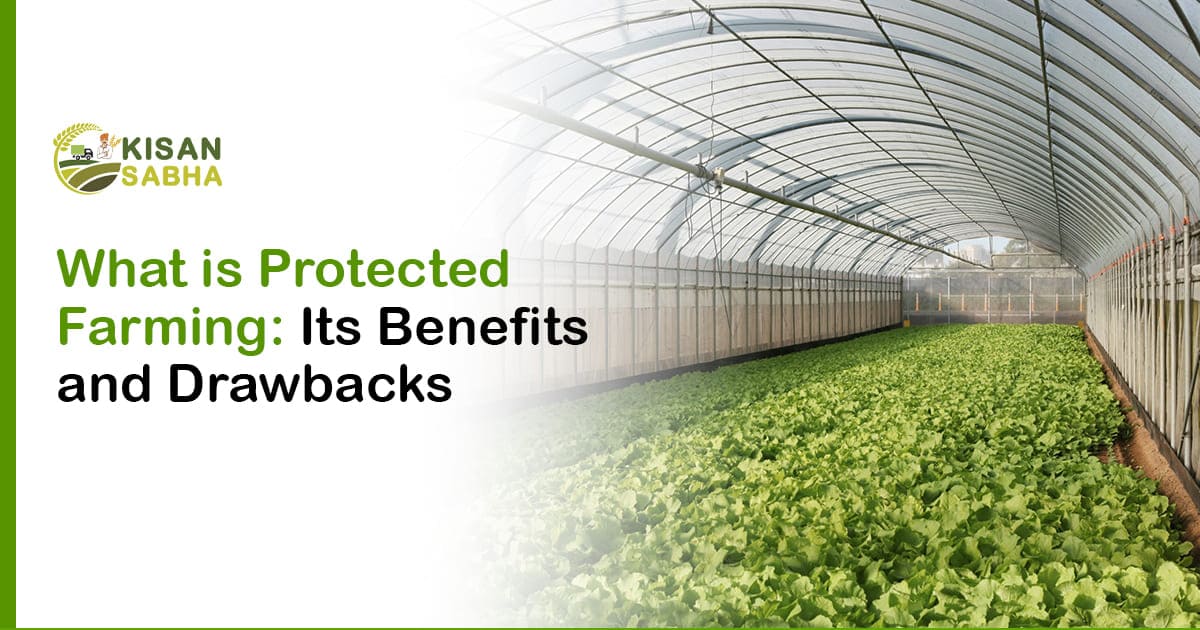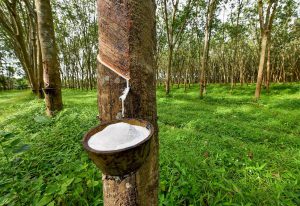Protected farming is a cropping approach in which a managed microclimate influences plant growth and development. As agriculture has evolved, industrial farming has widely adopted many protected cultivation techniques. These agricultural protection strategies include greenhouses, plastic houses, antiques, internet, and shade houses. A greenhouse consists of a framed or inflatable structure lined with a clear or semi-transparent material that allows crops to mature under at least partially regulated conditions.
Agriculture and allied sectors are major economic drivers in India. However, the advent of several new biotic and abiotic stressors following the Green Revolution is a major source of worry. Consequently, protected cultivation systems alleviate these pressures by providing a completely regulated environment.
Given the increased food demand, it is vital to consider protected farming. Moreover, the greenhouse is the most efficient means of achieving the goals of protected horticulture. As a result, many-house cultivation has become an important Indian agricultural policy.
The Importance of Protected Farming
It is no longer viable to ignore the global issue of climate change. The primary underlying reasons include anthropogenic issues such as the unsustainable use of fossil fuels, the destruction of forests for industrial growth, and rising urbanization and overpopulation.
- Frost, wind, rain, storms, and cold are not a problem for the crop. Plant development is faster and harvests develop faster due to controlled conditions.
- Long-term gains in manufacturing output and quality.
- Optimized water usage reduces consumption by 40-50%.
- Farmers use inputs effectively.
- Reduced or eliminated disease and pest occurrence.
- Crops reach full maturity throughout the year.
- Farmers can start dry-farm crops.
- Advanced techniques for industrial production of high-value commodities like flowers and medicinal plants.
- The labor pool reduces crop cultivation in unfavorable weather conditions.
- Continuous cultivation of some crops meets customer demand.
- Fully grown, high-quality, and even organic crops for export markets.
- Significantly increased income from minor landholdings.
- Farmers prepare successful nurseries from seeds or vegetative propagation as needed.
- More opportunities for educated children to work for themselves on farms. Controlling
- The microclimate and bug-proof qualities of the greenhouse breed plants, culminate in the development of current varieties and seed production.
Advantages and Disadvantages of Protected Farming
Protected farming is a farming practice that allows permanent cover of crop wastes on a soil surface with minimal or no soil contamination and promotes crop variety. Thus, this farming philosophy supports biodiversity and natural biological activity above and below the soil’s surface, which contribute to increased water and nutrient usage efficiency to sustain and boost crop output.
Advantages
- Protected Cultivation allows farmers to produce vegetables for an extended period. In addition, farmers can grow all varieties of vegetables in all seasons.
- Farmers profit more from unseasonal crop production.
- Natural resources can be used wisely by practicing protected farming.
- Protected farming is useful and effective in places with varying climates.
Disadvantages
- It is not possible to raise all types of crops.
- Water will be preserved as a result of less evaporation.
- The amount of sunlight reaching the plants will be reduced due to the nematode-caused illness.
- Because of the high quality and quantity of the output, a strong demand (nearby market) is required to sell the produce.
Also Read:- A Comprehensive Guide To Safely And Affordably Shipping Farm Equipment
Indian Subsidies For Protected Farming
Due to excessive rain, insufficient rain, hail, storms, etc., farmers labor arduously to grow crops. These weather events can spoil crops in a matter of minutes, costing farmers thousands of dollars. They also destroy standing crops. However, to address these issues, the Indian government encourages farmers to practice protected farming to obtain high-yield production. It also provides up to 90% of the project setup cost for constructing greenhouses and net houses. This initiative also enables farmers to take full advantage of government subsidies for agricultural services, greenhouse farming schemes, project application procedures, and other farming services.
However, to qualify for subsidies, the government has established some minimum standards for the construction of greenhouses and net houses. Government regulations state that the cost of a structure is between 25 and 60 lacs for one acre (4000 sq. m.) in size, depending on the application.
Conclusion
Aside from traditional research, which aims to determine the food production supply in India, protected farming adds a new dimension to agricultural research and development. Therefore, protected farming, first and foremost, provides an opportunity to halt the depletion of resources, lower the cost of cultivation, and encourage agricultural development. Along with the benefits of many types of protected farming, there are many barriers to adoption, therefore farmers’ traditional views about zero tillage must be changed. There is a need to educate farmers on the latest agricultural farming services on a big scale to gain the different benefits of protected farming by converting dense tillage to zero or minimal tillage.




